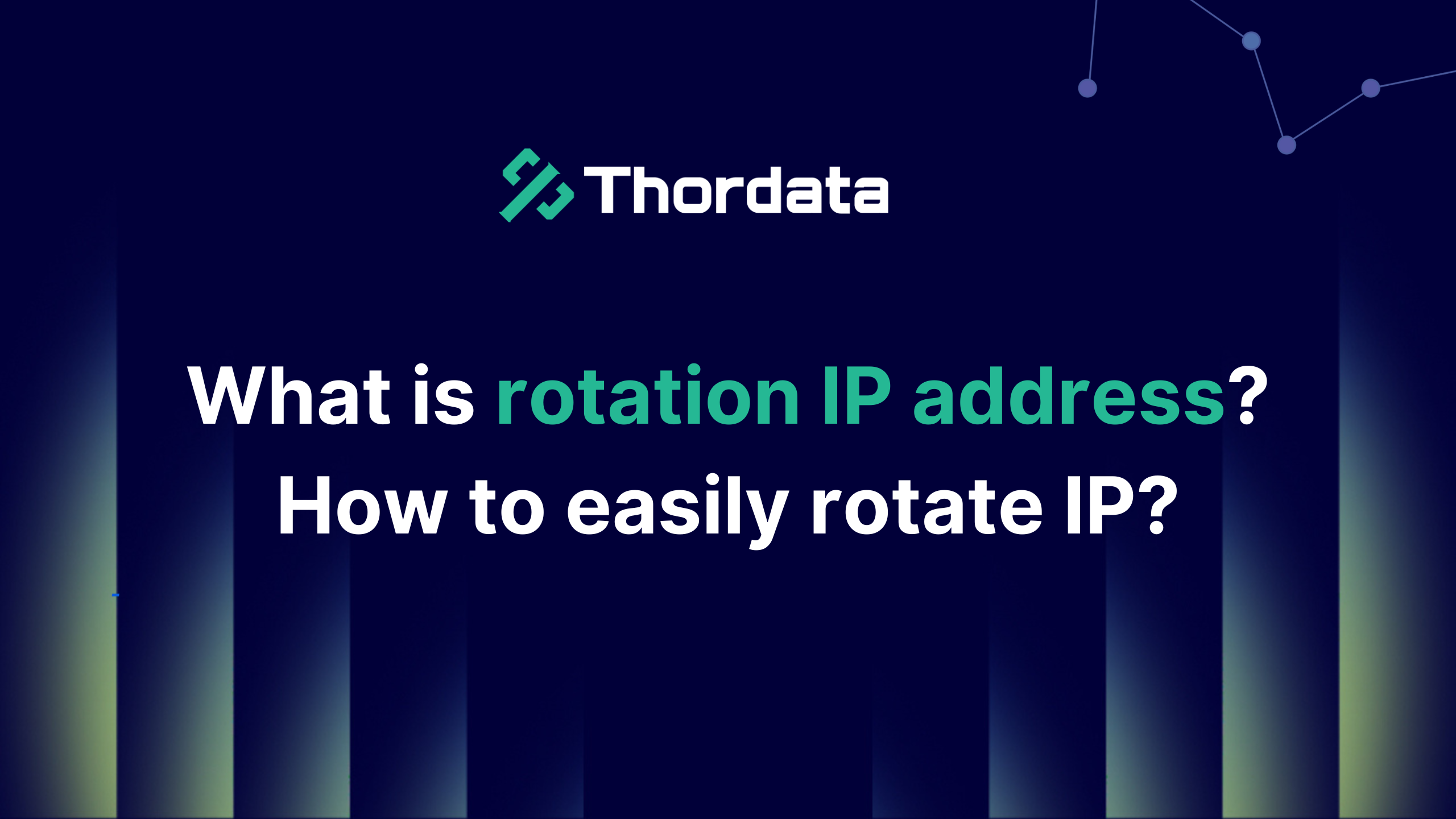What is rotation IP address? How to easily rotate IP?


IP address rotation stands out as a powerful technique for overcoming common internet challenges like getting blocked during web scraping or being tracked by personalized ads. This technology works by systematically changing your assigned IP address according to specific triggers, making your online activities appear to come from different sources.
IP rotation essentially works through three main mechanisms:
1. Changing addresses at scheduled time intervals
2. Rotating after sending a certain number of requests
3. Switching each time you connect to the internet
In this guide, you’ll learn everything needed to understand and implement IP address rotation effectively in 2025. We’ll cover what rotating IPs are, explore their key benefits, and provide practical steps to implement them based on your specific requirements.
What is a Rotating IP Address and Why It Matters
A rotating IP address functions as a dynamic digital identity that changes automatically based on specific triggers. When we talk about IP rotation, we’re referring to a technique that switches your device’s IP address at regular intervals, making your online connection appear to come from different locations or devices. This process typically occurs after a set time period, following a certain number of connection requests, or each time you establish a new internet connection.
IP rotation works through different mechanisms depending on who manages it. Your Internet Service Provider (ISP), or a dedicated proxy service, can all facilitate this IP-changing process.
The rotation process serves multiple critical purposes:
● Preventing detection and blocking during automated activities
● Distributing network traffic for load balancing
● Bypassing regional restrictions on content
● Enhancing privacy by making your activities harder to track
● Avoiding rate limits imposed by websites 
Better Security and Privacy
When you regularly change your IP address, you create a moving target that becomes exceedingly difficult for malicious actors to track or target. This rotation significantly minimizes your risk of falling victim to cyberattacks such as Distributed Denial of Service (DDoS) attacks that typically focus on specific IP addresses.
Rotating residential proxies make your traffic patterns nearly impossible to analyze, effectively preventing websites from building detailed profiles based on your browsing behavior. This heightened anonymity not only protects your personal information but also decreases the likelihood of your activity being intercepted by cyber threats.
Uninterrupted Web Scraping
Web scraping has evolved into a sophisticated competition between websites and scrapers, with both sides constantly developing new techniques. Rotating IP addresses provides several critical advantages in this arena:
● Distributes requests across multiple IPs to avoid triggering anti-scraping measures
● Bypasses rate limits imposed by websites
● Reduces the likelihood of encountering CAPTCHAs
● Prevents IP bans and blacklisting
● Enables gathering of more comprehensive datasets
Proxy rotation helps web scrapers mimic organic user behavior, making it significantly harder for websites to detect and block automated requests. This capability proves particularly valuable for corporate research teams gathering competitive intelligence or price information across different markets.
Avoiding Dynamic Pricing and Tracking
Many e-commerce sites implement dynamic pricing based on your browsing history and previous searches. IP rotation effectively counters this practice by making each visit appear to come from a different user.
Improved SEO and Ad Testing
SEO specialists rely heavily on rotating proxies to gather accurate data about search rankings. By simulating searches from different geographic locations, they can obtain unbiased results without local influences or search engine personalization. This capability allows businesses to:
● Check keyword rankings across various regions
● Monitor competitor visibility in different markets
● Test localization strategies effectively
● Gather comprehensive SERP data
Ad testing benefits tremendously from IP rotation. Marketers can verify that campaigns display correctly across different regions, detect potential ad fraud and check localized pricing strategies. By viewing ads through IP addresses that mimic their target audience, companies ensure their marketing reaches the intended viewers as designed.
How to Rotate Your IP Address Easily
Rotating your IP address doesn’t require advanced technical expertise. Several user-friendly methods make this process accessible to anyone seeking enhanced privacy and unrestricted access to online content.
Using Thordata proxy server rotating ip
Thordata offers the most powerful solution for automatic IP rotation.By intelligently managing a vast pool of proxy resources, you can configure precise rotation strategies based on your target country or region, and choose between time-based or request-based rotation.
Getting started is simple:
1. Sign up for Thordata and subscribe to the proxy rotation service
2. Configure your rotation parameters (time-based or request-based)
3. Send requests using the rotating proxies
The key advantage is simplicity — while you focus on your core tasks, Thordata handles rotation seamlessly in the background. It continuously monitors connection quality and dynamically adjusts the rotation strategy in real time, helping you bypass sophisticated anti-bot systems without any manual intervention.
Manual IP Change via Router or ISP
The simplest method for occasional IP changes involves working with your existing internet connection. Many ISPs assign dynamic IP addresses that can be refreshed by:
1. Turning off your router for 5-10 minutes before reconnecting
2. Enabling automatic IP refresh features (if available from your ISP)
3. Contacting your provider to request a new IP assignment
While straightforward, this approach has limitations—your new IP will still come from the same geographic region, and some ISPs may reassign the same address after a brief disconnection.
Different IP Rotation Techniques Explained
Time-based Rotation
Time-based rotation automatically changes your IP address at predetermined intervals you set yourself. This technique switches addresses every few minutes, hourly, or daily without any manual intervention needed. The key advantage lies in its predictable behavior, creating a balanced approach between consistent IP usage and rotation frequency.
Request-based Rotation
Request-based rotation changes your IP address after every request or after reaching a specific number of requests. This approach distributes connections across multiple IPs, making it difficult for websites to identify patterns that would reveal automated activity.
Sticky Sessions vs. Rotating Sessions
Sticky sessions maintain the same IP address for an extended period—Thordata supports custom sticky sessions up to 90 minutes. These sessions prove essential when websites require consistent identity, such as during:
● Account login processes
● Multi-step form submissions
● Shopping cart operations
● Authenticated API interactions
Rotating sessions, by contrast, switch IPs with each request. This approach maximizes anonymity but can potentially disrupt connection-dependent activities that require persistent identity.
Choosing the Right Rotating Proxy for Your Needs
Selecting the optimal rotating proxy solution depends on understanding the unique strengths of each proxy type.
Factors to Consider: Speed, Cost, Anonymity
When selecting your proxy type, evaluate these key factors:
Speed requirements – Datacenter proxies offer the fastest connections while mobile proxies may experience slightly slower response times
Budget constraints – Thordata residential proxies start at $0.65/GB, ISP proxies start at $0.75/IP, datacenter proxies start at $0.75/IP, and unlimited proxy servers start at $69/day.
Anonymity needs – Mobile proxies provide the highest level of undetectability, followed by residential proxies, with datacenter options offering the least anonymity but fastest performance
Conclusion
IP address rotation stands as a powerful technology for maintaining online privacy, collecting data efficiently, and bypassing various internet restrictions. Throughout this guide, you’ve learned how rotating IPs change your digital identity automatically through time intervals, request counts, or reconnection triggers.
Remember that successful IP rotation isn’t just about switching addresses—it’s about selecting the right technique and proxy type for your specific goals. With the knowledge from this guide, you can now make informed decisions about implementing IP rotation in your personal or professional online activities.
Frequently asked questions
What is IP address rotation?
IP address rotation is a technique that automatically changes your device’s IP address at regular intervals or based on specific triggers.
Should I use rotating IP?
If you need to perform large-scale crawling, bypass anti-crawling mechanisms, access restricted content, or improve the efficiency of concurrent requests, then using rotating IP is a very suitable choice.
What is the difference between static and rotating IP addresses?
Static IP is fixed and suitable for scenarios where you need to keep the session stable; while rotating IP will automatically change according to the set frequency, suitable for tasks such as crawling and data collection that need to improve anonymity and bypass anti-crawling and anti-blocking mechanisms. Which one you choose depends on your needs for connection stability and concealment.
About the author
Yulia is a dynamic content manager with extensive experience in social media, project management, and SEO content marketing. She is passionate about exploring new trends in technology and cybersecurity, especially in data privacy and encryption. In her free time, she enjoys relaxing with yoga and trying new dishes.
The thordata Blog offers all its content in its original form and solely for informational intent. We do not offer any guarantees regarding the information found on the thordata Blog or any external sites that it may direct you to. It is essential that you seek legal counsel and thoroughly examine the specific terms of service of any website before engaging in any scraping endeavors, or obtain a scraping permit if required.